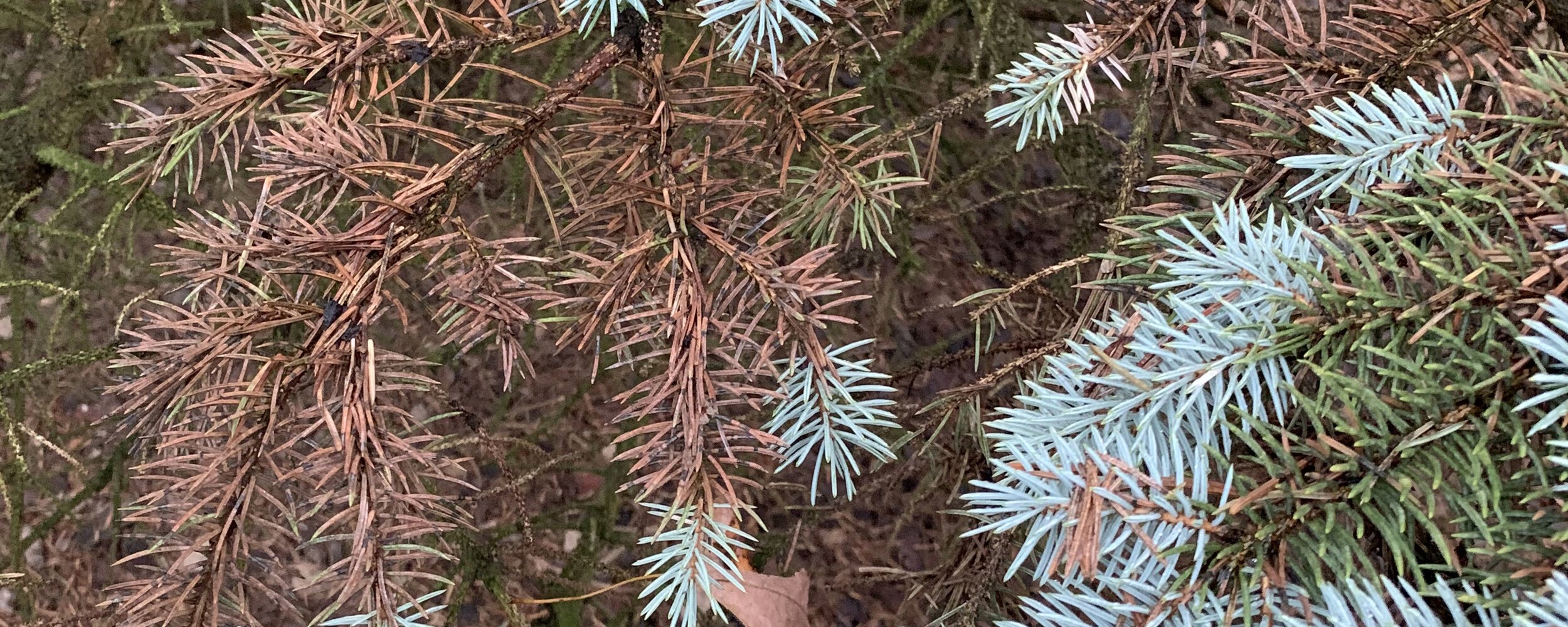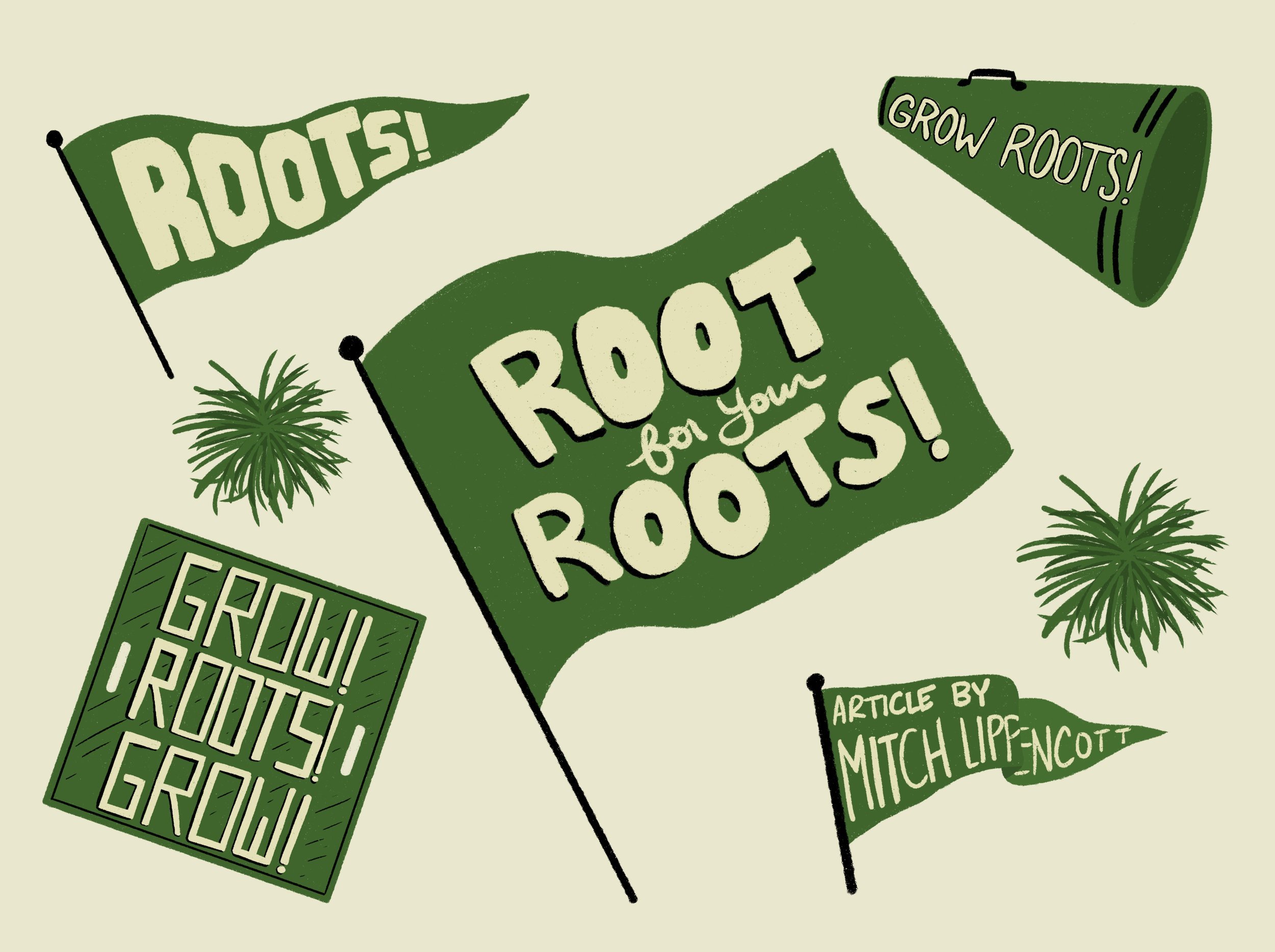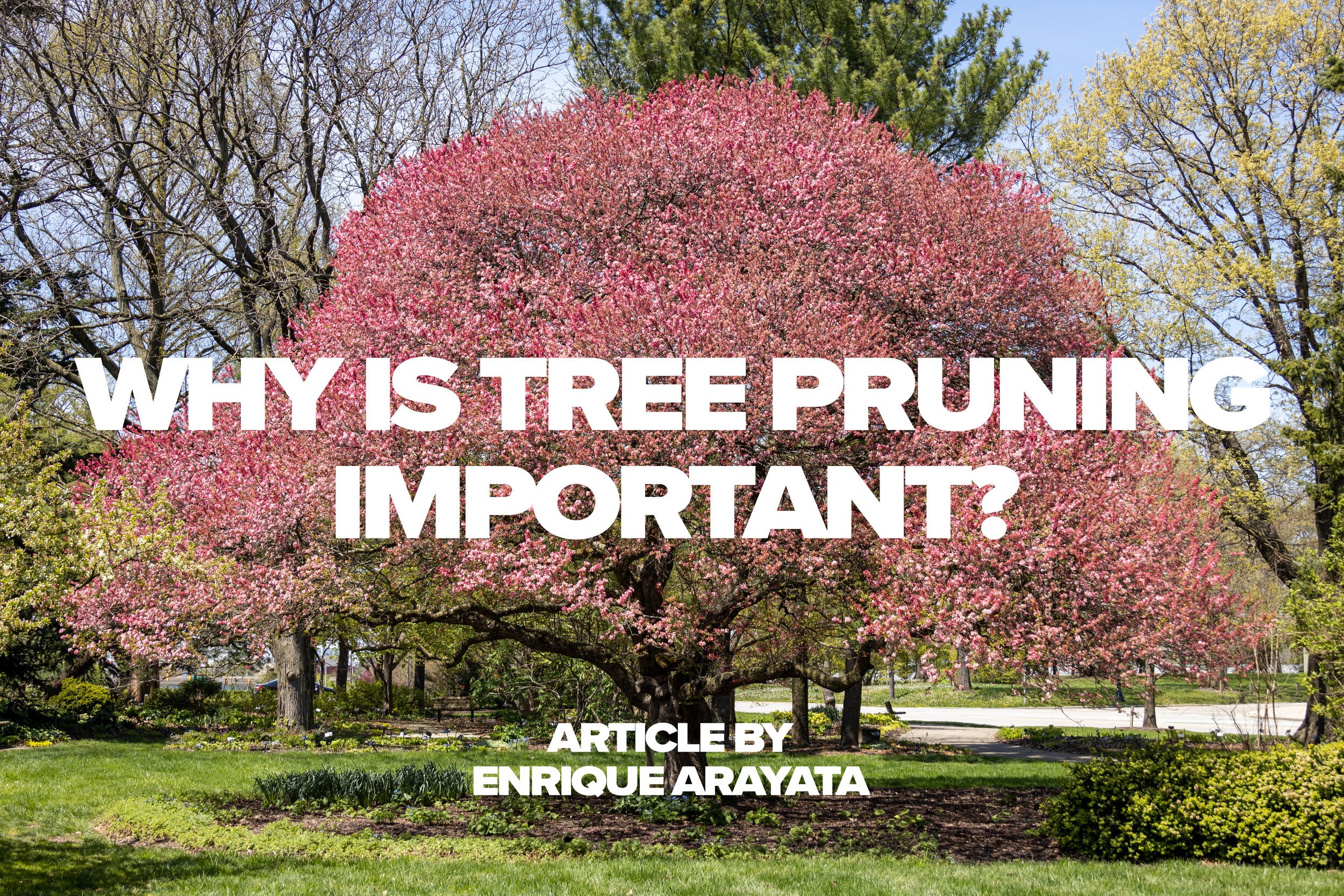By Mike Wilson
ISA Certified Arborist®
May 2, 2024
Rhizosphaera needle cast is a fungal disease that affects various species of coniferous trees, particularly spruces throughout central Ohio and the midwest, and has become increasingly common. This disease can cause significant damage to tree health and aesthetics if left untreated. Understanding its causes, symptoms, and management strategies is crucial for preventing its spread and minimizing its impact on host trees in your landscape. Rhizosphaera needle cast, or needle cast for short, is primarily caused by the fungus Rhizosphaera kalkhoffii. This fungus thrives in humid and wet conditions, which Ohio is seeing more and more of now. Spores of the fungus are spread through water splash, wind, and contaminated pruning tools, facilitating its transmission from infected to healthy trees. Colorado blue spruce trees (Picea pungens) is especially vulnerable due to the fact that they much prefer dry, arid environments like in Colorado and Utah.
A young Colorado blue spruce tree (Picea pungens) rapidly defoliating
Symptoms
The symptoms of needle cast typically appear on older needles first and progress upwards through the tree. Common symptoms to look out for are:
Needle Discoloration: Infected needles initially develop yellow or light green spots, which gradually turn brown or purple-ish brown as the disease progresses.
Needle Dropping: Infected needles may prematurely drop from the tree, leading to sparse foliage and an overall thinning of the canopy.
Black Fruiting Bodies: Under close inspection, black fruiting bodies (spores) of the fungus may be visible on the surface of infected needles, particularly during humid conditions. This shows up as very fine black peppering found on the underside of the needles.
Black fruiting bodies (spores) of the fungus fungus Rhizosphaera kalkhoffii on the surface of infected needles
Effective management strategies of Rhizosphaera needle cast involves a combination of cultural practices, chemical control, and preventive measures.
Cultural Practices
Proper Tree Spacing: Ensuring adequate spacing between trees promotes good air circulation, reducing humidity levels and minimizing fungal growth.
Pruning: Prune infected branches to improve air circulation within the canopy and remove sources of fungal spores. Also, lightly elevating the canopy of a tree above the ground can help increase airflow.
Mulching: Apply a layer of organic mulch around the base of trees to retain soil moisture and reduce stress, which can help trees resist fungal infections.
Chemical Control
Apply fungicidal sprays containing active ingredients such as chlorothalonil or copper hydroxide during the spring months as new growth is emerging. Multiple applications in 10 to 14-day intervals applied annually are most effective, however, there is no end-all cure for this fungal disease.
Preventive Measures
Monitoring: Regularly inspect trees for early signs of infection, especially during periods of high humidity.
Water Management: Avoid overhead watering and excessive irrigation, as these practices can create ideal conditions for fungal growth. Water trees in the morning to avoid foliage staying wet overnight.
Plant Selection: Some other options that may be suitable for your landscape include, but are not limited to: Concolor fir (if you desire the silvery blue color), Norway spruce, green giant arborvitae, and Canadian hemlock.
Purple-ish brown needles
Rhizosphaera needle cast poses a significant threat to the health and vitality of coniferous trees, particularly Colorado blue spruce. By understanding the causes, symptoms, and management strategies associated with this fungal disease I hope that you will, as a Colorado blue spruce owner, help keep these beautiful trees healthy. Through a combination of cultural practices, chemical controls, and preventive measures, it is possible to mitigate the impact of Rhizosphaera needle cast and preserve the beauty and ecological value of our coniferous forests and landscapes. Please reach out to Russell Tree Experts if you suspect your trees are infected or need advice on proper maintenance as our ISA Certified Arborists® (myself included) are happy to take a look! Have a happy summer and we look forward to helping you with your trees!
Sincerely,
Mike Wilson I Regional Manager, Russell Tree Experts
Mike joined RTE in 2013 and has been in the green industry for over 14 years! He is an ISA Certified Arborist® and a graduate of Oregon State University. Mike is an outdoor enthusiast and a US Army Medic Veteran!









